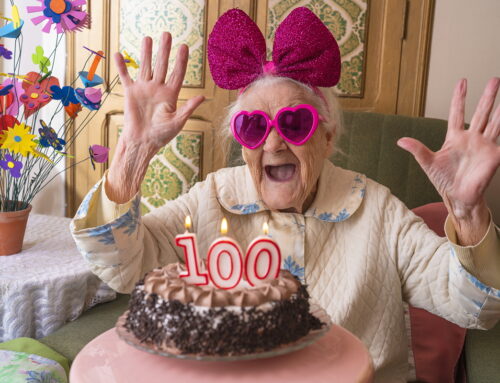If someone gave me a nickel every time a marketing expert used “thinking outside the box,” as a marketing strategy, I’d be a very rich woman. That phrase might sound good, but it offers a false promise built on a fake idea. Here’s why I think it’s a bad idea to think outside the box.
Boxes Provide Structure
Is there really anyone thinking inside a box? Where’s the box? Who said we should or shouldn’t work inside or outside that box? What is the box?
I believe that darn box is actually a mutually agreed upon set of rules governing a social construct. Wait! Let me explain with a couple examples. Lawful drivers agree to drive the speed limit as posted. So if the sign says 75 miles per hour on the highway, we agree to drive 75 mph. But nearly half of all drivers report exceeding the speed limit. In the US, we all agree to drive on the right side of the road. But if you’re delivering the mail in a USPS vehicle, you get to drive on the left side of the road to reach certain mailboxes. For college students, the deal is that students attend class, do the work, and then receive credit for it if they learn the material. Unless they can test out of the class and still get the credit. I could go on and on.
So if the box is a set of rules we agree to, it’s clear there are plenty of exceptions to them. So that means working outside of the box means you’re an agreed-upon exception, working without or against the rules? Seems to me those boxes aren’t really a box at all. And if there isn’t really a box or a single set or rules, then aren’t we all working and thinking inside and outside of that non-box?
Rules Are Necessary
Rational people accept that rules are necessary for society and groups. But young artists love falling back on  the old chestnut that they don’t need the rules underpinning their discipline. They’re there to break ’em. You point to Michelangelo, they point to Banksy. But, if these neophytes stick with their art, they’ll reach a point where they understand why they need to learn rules. When they make the leap from amateur to artist, they’re demonstrating they know the rules so well, they can successfully break them in new and innovative ways.
the old chestnut that they don’t need the rules underpinning their discipline. They’re there to break ’em. You point to Michelangelo, they point to Banksy. But, if these neophytes stick with their art, they’ll reach a point where they understand why they need to learn rules. When they make the leap from amateur to artist, they’re demonstrating they know the rules so well, they can successfully break them in new and innovative ways.
In his prime, Picasso went from being a well-regarded figurative artist to breaking new ground with Georges Braque. They broke all of the rules and created a new art movement called Cubism. Picasso still painted people. He simply looked at them in a different way. He eliminated the unnecessary. He rejected perspective, shading, and chiaroscuro. He was focused on showing things as they are, and not just what they looked like.
Picasso believed Realism and similar movements created illusions of reality. His goal was to move beyond it.
Learning the Rules
Picasso is credited with uttering the phrase, “Learn the rules like a pro, so you can break them like an artist.” I wondered when he said it, so I did what everyone does, I Googled it.
My search results listed Picasso, the Dalai Lama XIV, and Audemars Piguet as having said it or a close variation of it. Who said it first? That’s up for debate. [And a rabbit hole for another day.] More interesting to me is that each version assumes the rules come first, breaking them comes second. When you think about thinking outside the box, don’t you have to know everything about the box, it’s height, width, depth, and contents before you can think outside of its walls?
So what are the rules or the box for senior living marketing? They’re the same ones all marketers must learn no matter the industry or audience.
It’s all about your audience and what they want or need.
Breaking the Rules
Slick marketers sell their ideas as thinking outside the box. But what they’re selling is an illusion. If they’re really creative, you should get something other than a cliché as their strategy. Breaking the rules for the sake of breaking the rules is a waste of your time and resources. To reach your audience, you need to know them. Really know them.
You need factual data that transforms them from a faceless mass into a cohort of individuals who share specific commonalities. They have a specific need and they’re searching for a solution. If you assume you know your audience, you might think they’re searching for skilled nursing care for a loved one, hospice support, or an active lifestyle in an upscale setting with first-class dining. But you would be wrong. Those “search needs” are what you want them to care about. Without the data, you don’t know what they care about.
Rethinking the Rules
Remember our painterly friend? Picasso? He said every act of creation is first an act of destruction. He’s right. If your marketing strategy for 2022 is the same as it was for 2020 and 2021, you’re going to see different results. While I won’t go so far as to say you must destroy this year’s strategy and begin from the ground up, I will suggest that you must think about it as though you’ve destroyed it.
Consumers have changed in the past two years, let alone in the last 20 years. Your marketing strategy needs to be evolving in order to reach them. Your audience no longer needs you to tell them what’s important. Your audience has learned they have the power to control and direct the conversation. The high-value audience you want isn’t afraid of the internet, and their adult children are just as comfortable with it. They’re researching and engaging online with reviews, your competitors, and your website long before you actually have the opportunity to speak directly with them.
Your senior living marketing strategy needs to forget about boxes and embrace a 24/7 approach. Phone calls and postcards may work with the Greatest Generation for now. But Boomers and Gen Xers are bringing an entirely new game to the table. If you’re still worrying about thinking inside or outside the box, you’ll be left behind.
If you’d like to break away from boxes, I hope you’ll find time to chat with me. Together, I believe we can offer the right solution for your situation.






